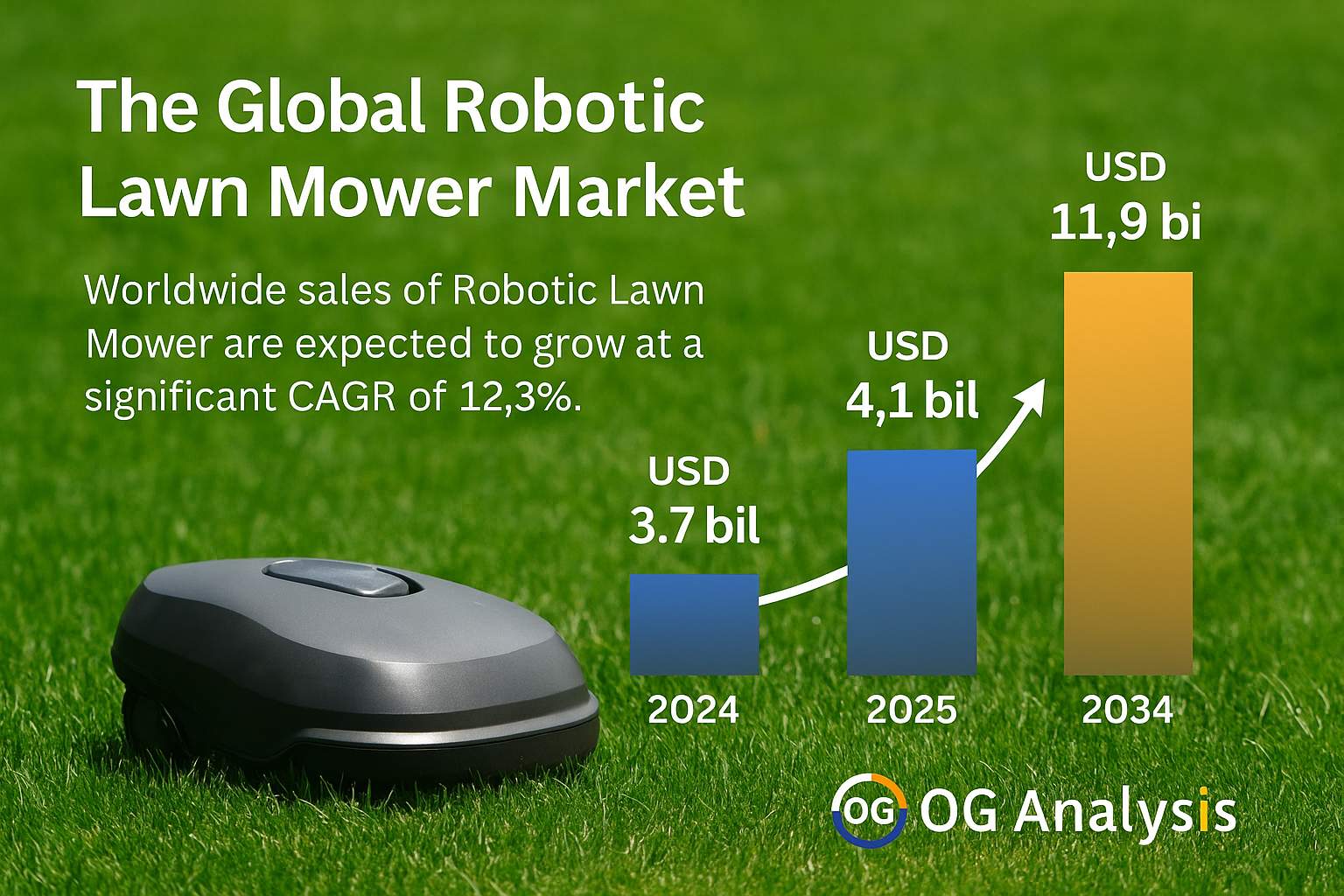The Global Robotic Lawn Mower Market: Smarter Lawns, Greener Growth
The lawn care industry is witnessing a digital revolution, and at the heart of it is the rise of robotic lawn mowers. Valued at USD 3.7 billion in 2024 and projected to grow to USD 4.1 billion in 2025, the Global Robotic Lawn Mower Market is on a steep upward path. With a remarkable CAGR of 12.3%, global sales are expected to hit USD 11.9 billion by 2034 — driven by homeowners, commercial landscapers, and smart city planners alike.
As environmental awareness and demand for automation rise, robotic mowers are rapidly replacing traditional gas-powered machines. These smart devices offer precise, programmable, and quiet mowing solutions with significantly lower emissions. Battery-powered variants are particularly popular, offering an eco-friendly and cost-efficient alternative. Built-in sensors, GPS navigation, AI-based route optimization, and smartphone connectivity are setting new benchmarks in autonomous lawn maintenance.
1. Why are robotic lawn mowers becoming a must-have for smart homes?
With the rise of smart home ecosystems, consumers are looking for tech-driven solutions that save time and reduce manual effort. Robotic lawn mowers integrate seamlessly into smart home systems, offering voice control, scheduling, and real-time updates — all with minimal human intervention.
2. How do battery-powered mowers outperform their electric or gas counterparts?
Battery-powered mowers are gaining traction for their quiet operation, zero emissions, and lower maintenance. As battery technology improves, these models now offer longer runtimes and faster charging, making them a practical and eco-friendly choice for most lawn sizes.

3. Which lawn size category is driving the highest demand for robotic mowers?
Small and medium-sized lawns are seeing the fastest adoption rates. These segments benefit the most from robotic mowers’ compact design and affordability, especially in suburban and residential areas where yard sizes are modest and routine mowing is time-consuming.
Click Here for the Full Market Report
4. Are commercial users adopting robotic lawn mowers as well?
Yes — commercial landscaping businesses, golf courses, and municipalities are increasingly investing in robotic mowers for consistent performance and labor cost reduction. Fleet management tools and remote monitoring are also enhancing their appeal in professional settings.
5. How are AI and smart sensors transforming the user experience?
AI enables robotic mowers to map lawns intelligently, avoid obstacles, and adapt to weather changes or grass density. Features like anti-theft alerts, rain sensors, and app-based control are making these devices more intuitive and user-friendly than ever.
6. Which regions are leading in robotic lawn mower adoption?
Europe leads globally, supported by strong environmental policies and tech-savvy consumers. North America is catching up with rising smart home penetration, while Asia-Pacific is becoming a hotspot due to increasing urbanization and landscaping trends in high-density areas.
7. Who are the top companies shaping this fast-moving market?
Major players include Husqvarna Group, Bosch, Honda, STIGA, and The Toro Company. Other innovators like Robomow, Greenworks, and Worx Landroid are also making waves with their focus on affordability, innovation, and user-centric design.
Click Here for the Full Market Report
Segmentation Overview: Understanding Market Structure:
By Product Type: Battery-Powered, Electric-Powered
By Lawn Size: Small, Medium, Large
By End User: Residential, Commercial
-
By Region:
-
North America
-
Europe
-
Asia-Pacific
-
Latin America
-
Middle East & Africa
-
Key Players of the Market:
-
Husqvarna Group
-
Robert Bosch GmbH
-
Honda Motor Co., Ltd.
-
Deere & Company
-
STIGA S.p.A.
-
The Toro Company
-
Zucchetti Centro Sistemi S.p.A.
-
Robomow (MTD Products Inc.)
-
Worx Landroid (Positec Tool Corporation)
-
Cub Cadet (MTD Products Inc.)
-
AL-KO KOBER SE
-
McCulloch (Husqvarna Group)
-
Mamibot Manufacturing USA Inc.
-
LawnMaster (Cleva North America, Inc.)
-
Greenworks Tools (Globe Tools Group)
Explore More Industry Insights:
|
Global Garden Hand Tools Market Report
|
|
| Global Cultural and Experiential Travel Market Report | |
Connect with us on:
Phone: +91 888 64 99099
Email: mailto:sales@oganalysis.com
Learn More about OG Analysis
OG Analysis, established in 2009 has 14+ years of experience and served 1800+ clients from 980+ companies operating in 54+ countries. OG Analysis is a leading provider of market research reports in Chemicals, Energy, Oil & Gas, Food & Beverage, Electronics & Semiconductors, Automotive, Telecommunication, Healthcare and Other industries